
U.S. Navy art
Admiral reveals five possible future sub designs
by DAVID AXE
https://medium.com/war-is-boring
For
several years now the U.S. Navy has been planning to replace older
attack and cruise-missile submarines with an improved version of the
cutting-edge Virginia-class undersea boat. And in late October, Adm. David Johnson, the sailing branch’s top sub-builder, finally unveiled the new vessel’s possible configurations during a conference in Virginia.
Options for the so-called “Block V” Virginias
range from a nearly 480-foot-long behemoth to a simpler model that’s
just 450 feet from bow to stern. But all five proposed designs are
longer than today’s standard Virginias, which measure just 380 feet.
And
for a good reason. The Block Vs—the Navy wants to build 10 of them
between 2019 and 2023—are expected to include a structural plug, known
as a “payload module,” inserted in the middle of the standard
nuclear-powered Virginia design. The module is meant to accommodate four vertical tubes that open to the water and can be accessed from inside the ship.
These
payload tubes could carry sea-launched robots, divers or—most
significantly—seven Tomahawk cruise missiles apiece. Combined with the
six-round tubes already installed in the bow of a standard Virginia,
a fully missile-loaded module would boost a sub’s Tomahawk count to an
impressive 40 missiles. Each maneuverable, GPS-guided Tomahawk can fly a
thousand miles at low level and hit a target with pinpoint accuracy.
The
Navy wants the missile-heavy Block V subs to replace the current fleet
of four dedicated cruise-missile submarines. The SSGNs, as they’re
known, were modified in the early 2000s from surplus “boomer” boats
carrying nuclear-tipped ballistic missiles. Each SSGN packs up to 154
Tomahawks. In 2011 the USS Florida cruise-missile sub fired at least 90 Tomahawks at targets in Libya, clearing the way for follow-on attacks by warplanes.
The
SSGNs are all already nearly 30 years old and will retire in the
mid-2020s, resulting in a precipitous decline in the Navy’s overall
cruise-missile capacity. A force of 10 Block V Virginias
would make up for around half of the missile shortfall. Subsequent
Block VI and Block VII submarines could restore the other half.
General
Dynamics Electric Boat in Connecticut, the Navy’s main
submarine-builder, sketched out a basic, 94-foot payload module a few
years ago. Last year, amid worsening budget uncertainty, the module
options ballooned to five.
The
longest three—97, 91 and 88 feet—differ in their precise layout and the
number of new bulkhead walls they add to the baseline Virginia design.
But they all preserve the sub’s 34-foot-diameter outline, “allow[ing]
the platform to perform within key performance parameters,” according to
Electric Boat vice president John Holmander
Two
shorter and simpler options with 70-foot module plugs include humps on
the sub’s hull allowing for slightly taller and therefore more
voluminous tubes. But this “turtleback” arrangement comes with
“attendant hydrodynamic and potential acoustic problems, especially at
the higher speeds,” retired Capt. Karl Hasslinger and John Pavlos wrote in the Navy’s official Undersea Warfare magazine.
It’s costing $500 million just to develop the Block V design. Today’s Virginias
cost slightly more than $2 billion apiece to build—and with the Block V
module that unit price could rise by hundreds of millions of dollars.
Whichever Block V layout the Navy chooses in coming years, it won’t come
cheap.
But new
submarines are among the sailing branch’s top priorities—and rightly so.
Stealthy and heavily armed, undersea boats are by far the most powerful warships for full-scale warfare. With their planned extensions and more missiles, the Block V subs could be the deadliest yet.
Today's submarines are in danger of becoming increasingly vulnerable as “game changers” in undersea warfare make it easier to detect them, a new report says.
Deep sea submarines have been a key part of the United States military’s
offensive and defensive missions for decades, but a significant part of
their utility lies in their ability to operate stealthily. To this end,
the US military has invested huge amounts of money into making
submarines – in particular, the Navy’s Virginia-class nuclear submarines
– quieter.
But rapid increases in computer processing power are offsetting these advances. Submarine detection techniques that do not measure sounds but rather the wake left by submarines, for example, have been known for decades. But “they have not been exploitable until very recently because computer processors were too slow to run detailed models needed to see changes in the environment caused by a quiet submarine,” according to a report from the Center for Strategic and Budgetary Assessments (CSBA) released Thursday.
Recommended: What do you know about US women in war? A quiz.
Today, "big data" is providing the capability to run sophisticated oceanographic models in real time, making these detection techniques more feasible. As computer processors shrink, some will soon be small enough to fit on the sea floor. “These systems have the potential to make coastal areas far more hazardous for manned submarines,” the report notes.
What’s more, emerging acoustic techniques will get better. For example, computers could help find submarines by comparing the normal ambient noise from marine life and waves with measured noise, and in this way “identifying where sounds are being reflected off a submarine or obscured by its hull.”
This is both good and bad news for the US military’s undersea warfare programs. The same technologies that make submarines easier to detect could help spur a new generation of technology that the Pentagon could use to its advantage.
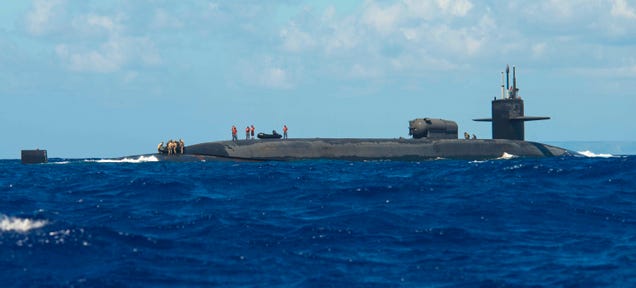
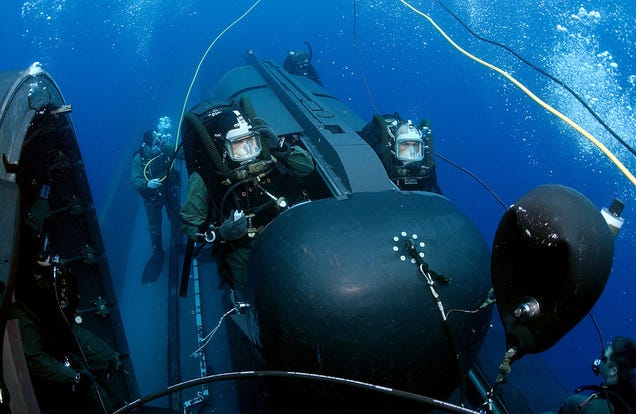
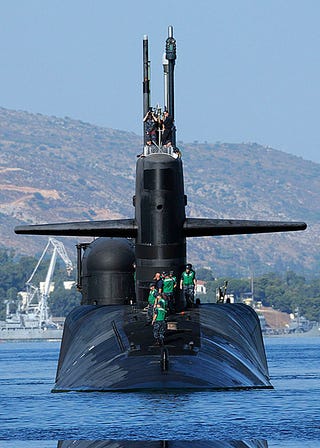
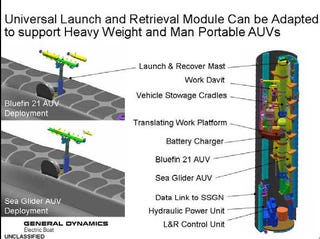
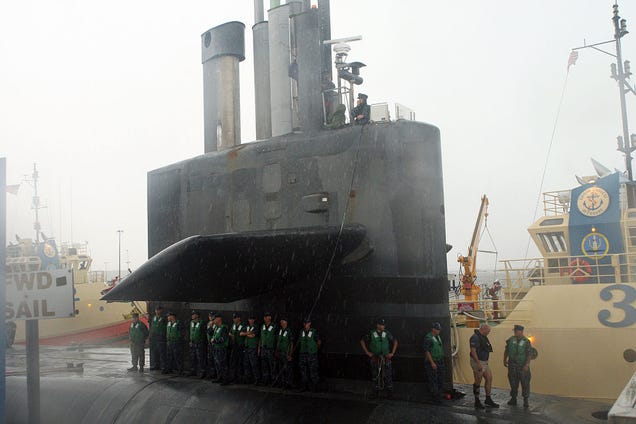

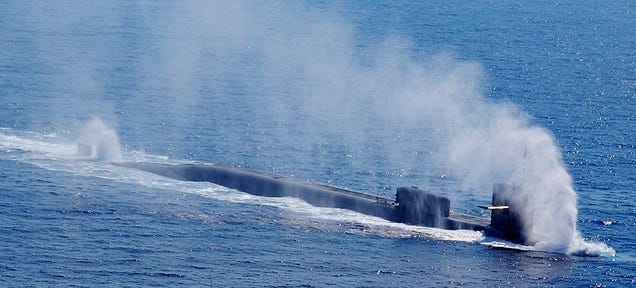


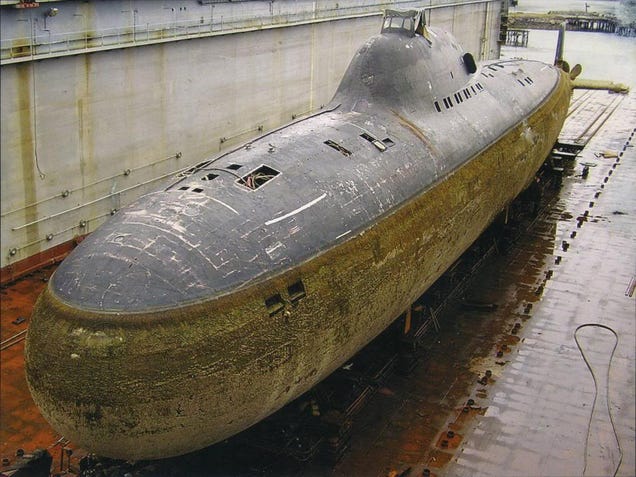
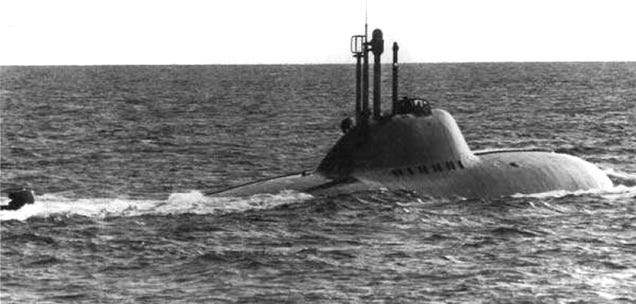
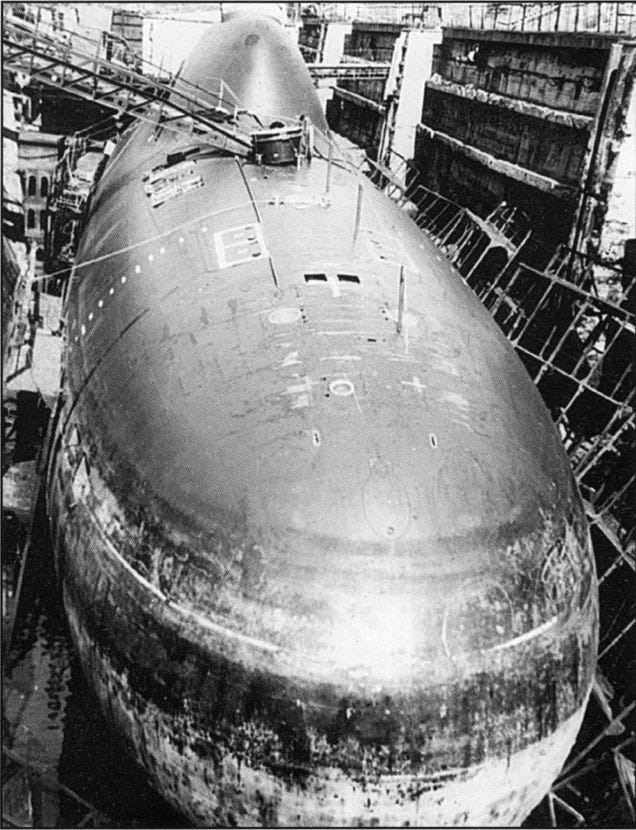
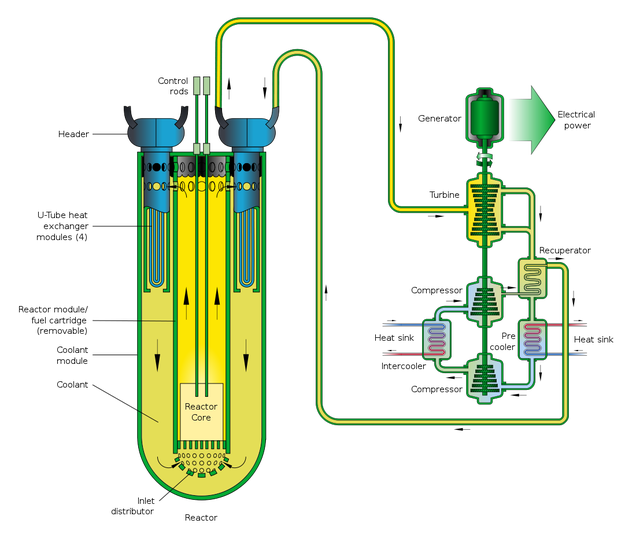
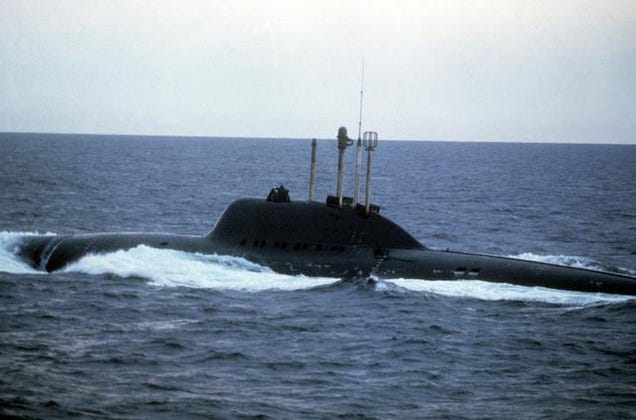
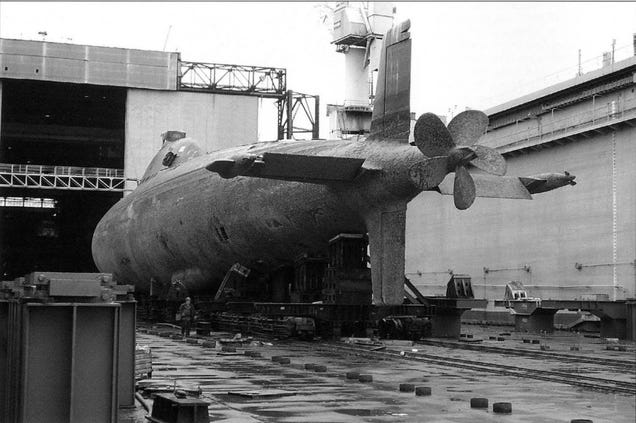

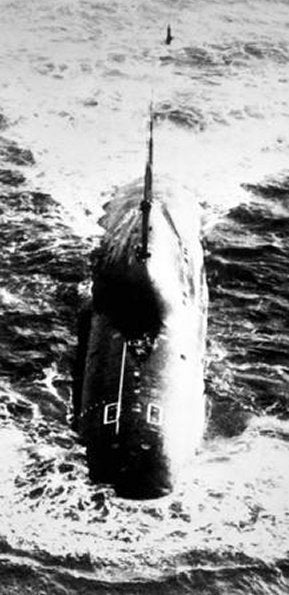
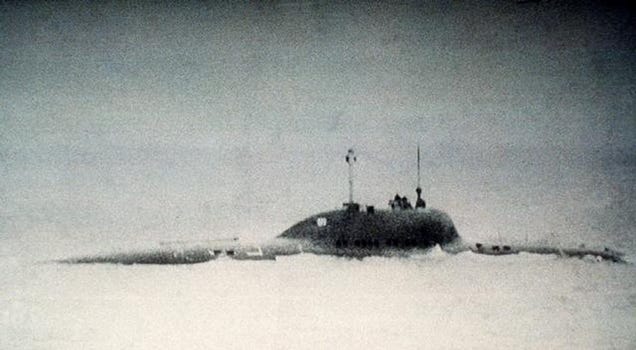
Project 971 Щука-Б (Shchuka-B, 'Shchuka' meaning "pike", NATO reporting name "Akula"), is a nuclear-powered attack submarine (SSN) first deployed by the Soviet Navy in 1986. The class is also known under the name Bars (meaning "snow leopard").[6] There are four sub-classes or flights of Shchuka, consisting of the original seven "Akula I" submarines which were commissioned between 1984 and 1990, six "Improved Akula" submarines commissioned between 1991 and 2009, one "Akula II" submarine commissioned in 1995 and one "Akula III" commissioned in 2001.[citation needed] The Russians call all of the submarines Shchuka-B, regardless of modifications.[7]
Some potential for confusion may exist, as the name Akula (Акула meaning "shark" in Russian) was used by the Soviets for a different submarine, the Projekt 941 which is known in the West as the Typhoon-class. By contrast, the Projekt 971 (the subject of this article) was named Shchuka-B by the Soviets but designated as the "Akula-class" by the West after the name of the lead ship, K-284.
The launch of the first submarine in 1985, according to defense analyst Norman Polmar, "shook everyone [in the West] up", as Western intelligence agencies had not expected the Soviet Union to produce such a boat for another ten years.[8]
The Akula incorporates a double hull system composed of an inner
pressure hull and an outer "light" hull. This allows more freedom in the
design of the exterior hull shape, resulting in a submarine with more
reserve buoyancy than its western analogs. This design requires more
power than single-hull submarines[citation needed] because of the greater wetted surface area, which increases drag.
The distinctive "bulb" or "can" seen on top of the Akula's rudder houses its towed sonar array, when retracted. Most Akulas have the SOCKS[citation needed] hydrodynamic sensors, which detect changes in temperature and salinity. They are located on the leading edge of the sail, on the outer hull casing in front of the sail and on the bottom of the hull forward of the sail. All Akulas have two T-shaped doors on the aft bottom of the hull, on either side[citation needed]. These are where the OK-300 auxiliary propulsion devices are located, which can propel the submarine at up to 5 knots (9.3 km/h).[citation needed]
All Akulas are armed with four 533 mm torpedo tubes which can use Type 53 torpedoes or the SS-N-15 Starfish missile, and four 650 mm torpedo tubes which can use Type 65 torpedoes or the SS-N-16
Stallion missile. These torpedo tubes are arranged in two rows of four
tubes each. Improved Akulas, Akula IIs have an additional six 533 mm
torpedo tubes mounted externally, capable of launching possibly up to 6
decoys each[citation needed].
The external tubes are mounted outside the pressure hull in one row,
above the torpedo tubes, and can only be reloaded in port or with the
assistance of a submarine tender. The 650 mm tubes can be fitted with
liners to use the 533 mm weaponry. The submarine is also able to use its
torpedo tubes to deploy mines.
Of the seven original Akula-I submarines, only three are known to
still be in service. These boats are equipped with MGK-500 Skat sonar
system (with NATO reporting name Shark Gill).[9][10]
The lead boat of the class, K-284 'Akula' was decommissioned in 2001,
apparently to help save money in the cash-strapped Russian Navy. K-322
'Kashalot' and K-480 'Bars' [Currently Ak Bars] are in reserve. K-480
'Bars' was put into reserve in 1998,[1] and is being dismantled in February 2010.[11] 'Pantera' returned to service in January 2008 after a comprehensive overhaul.[12] All were retrofitted with the SOCKS hydrodynamic sensors except Volk. All submarines before K-391 Bratsk have reactor coolant scoops that are similar to the ones of the Typhoon class SSBNs, long and tubular. Bratsk
and subsequent submarines have reactor coolant scoops similar to the
ones on the Oscar IIs, short and (the Typhoon, Akula and Oscar classes
use the similar OK-650 reactor).
Improved Akula-I Hulls: K-328 Leopard, K-461 Volk, K-154 Tigr, K-419 Kuzbass, K-295 Samara and K-152 Nerpa. These submarines are much quieter than early Akula class submarines and all have the SOCKS hydrodynamic sensors except Leopard.[13] The Akula-I Improved submarines have 6 533 mm decoy launching tubes, as do subsequent submarines. They have a different arrangement of limber holes on the outer hull than Akula Is. Nerpa and Iribis (not completed) have a different rescue chamber in the sail.[citation needed] I can be distinguished by the large dome on the top surface.
The Soviet advances in sound quieting were of considerable concern to the West, for acoustics was long considered the most significant advantage in U.S. submarine technology compared to the Soviets.
In 1983–1984 the Japanese firm Toshiba sold sophisticated, nine axis
milling equipment to the Soviets along with the computer control
systems, which were developed by Norwegian firm Kongsberg Vaapenfabrik.
U.S Navy officials and Congressmen announced that this technology
enabled the Soviet submarine builders to produce more accurate and
quieter propellers.[16]
{{This reference should be expanded to include the information that the "Toshiba" company listed was Toshiba Machine Tool Company (TMTC) and not in any way related to Toshiba Corporation, the electronics firm. It should also note that TMTC provided only the actual machine lathe and the numeric controller which enabled the lathe to turn the propellers' complex curves was provided separately by Kongsberg Vaapenfabrik directly to the Soviet shipyard. No U.S. equipment or technology was involved in the sales}}
Due to the breakup of the Soviet Union in 1991, production of all Akulas slowed.
The 1999–2000 edition of Jane's Fighting Ships incorrectly listed the first Akula-II as Viper (the actual name is "Vepr", "wild boar" in Russian), commissioned November 25, 1995, Gepard (Cheetah), launched 1999 and commissioned December 5, 2001, and Nerpa, laid down in 1993[1] began sea trials in October, 2008 and was commissioned by the Indian Navy as INS Chakra II in April 2012.[17]
Whereas the Russian Navy's Akula-II could be equipped with 28 nuclear-capable cruise missiles with a striking range of 3,000 km (1,620 nmi; 1,864 mi), the Indian version is reportedly armed with the 300 km (162 nmi; 186 mi)-range 3M-54 Klub nuclear-capable missiles.[32] Missiles with ranges greater than 300 km (162 nmi; 186 mi) cannot be exported due to arms control restrictions, since Russia is a signatory to the MTCR treaty.
Russia said in December 2014 that it is ready to lease India more nuclear-powered submarines a day after President Vladimir Putin and Prime Minister Narendra Modi pledged to deepen defence ties.[33]
In January 2015, it was reported that India was involved in negotiations involving the leasing of the Kashalot and the Iribis.[19]
In August 2012, the news media reported that another Akula-class submarine operated in the Gulf of Mexico purportedly undetected for over a month, sparking controversy within U.S. military and political circles, with U.S. Senator John Cornyn of the Senate Armed Services Committee demanding details of this deployment from Admiral Jonathan W. Greenert, the Chief of Naval Operations.[41]
The VA-111 Shkval (from Russian: шквал — squall) torpedo and its descendants are supercavitating torpedoes developed by the Soviet Union. They are capable of speeds in excess of 200 knots (370 km/h).[1]
Previously operational as early as 1977, the torpedo was announced as being deployed in the 1990s.[2] The Shkval is intended as a countermeasure against torpedoes launched by undetected enemy submarines.[2]
The VA-111 is launched from 533 mm torpedo tubes at 50 knots (93 km/h) before its solid-fuel rocket
ignites and propels it to speeds of 200 knots (370 km/h). Some reports
indicate that speeds of 250+ knots may be achieved, and that work on a
300-knot (560 km/h) version was underway.[3] This high speed is due to supercavitation, whereby a gas bubble, which envelops the torpedo, is created by outward deflection of water by its specially-shaped nose cone and the expansion of gases from its engine. This minimizes water contact with the torpedo, significantly reducing drag.[2]
Early designs may have relied solely on an inertial guidance system.[4][5] The initial design was intended for nuclear warhead delivery. Later designs reportedly include terminal guidance and conventional warheads.[6]
The torpedo steers using four fins that skim the inner surface of the supercavitation gas bubble. To change direction, the fin(s) on the inside of the desired turn are extended, and the opposing fins are retracted.[2]
The hunt for Red October gets easier. How submarine warfare is changing
Improving technology could make it easier to find submarines. That's a threat to the US fleet – but it's also an opportunity for the Pentagon, a new report says.
Today's submarines are in danger of becoming increasingly vulnerable as “game changers” in undersea warfare make it easier to detect them, a new report says.
But rapid increases in computer processing power are offsetting these advances. Submarine detection techniques that do not measure sounds but rather the wake left by submarines, for example, have been known for decades. But “they have not been exploitable until very recently because computer processors were too slow to run detailed models needed to see changes in the environment caused by a quiet submarine,” according to a report from the Center for Strategic and Budgetary Assessments (CSBA) released Thursday.
Recommended: What do you know about US women in war? A quiz.
Today, "big data" is providing the capability to run sophisticated oceanographic models in real time, making these detection techniques more feasible. As computer processors shrink, some will soon be small enough to fit on the sea floor. “These systems have the potential to make coastal areas far more hazardous for manned submarines,” the report notes.
What’s more, emerging acoustic techniques will get better. For example, computers could help find submarines by comparing the normal ambient noise from marine life and waves with measured noise, and in this way “identifying where sounds are being reflected off a submarine or obscured by its hull.”
This is both good and bad news for the US military’s undersea warfare programs. The same technologies that make submarines easier to detect could help spur a new generation of technology that the Pentagon could use to its advantage.
For
instance, next-generation submarines could fool sonar by emitting
special sounds to drown out their own radiated noise, “similar to the
method used in noise-canceling headphones,” the report notes. The US Navy could also use unmanned underwater drones to conduct acoustic jamming.
This
points to a brand new realm for the military-industrial complex. “A new
family of undersea vehicles and systems will be essential to maintain America’s
undersea edge,” the CSBA report argues. Failing to “aggressively
exploit” the latent potential of these emerging technologies “could
create an opening for rivals,” it warns, “and, in so doing, pose a major
threat to US security.”

The Ohio-Class Guided Missile Nuclear Submarine Is One Dangerous Beast

Four of the U.S. Navy’s gargantuan Ohio-class ballistic missile nuclear submarines, otherwise known as ‘Boomers,’ were converted into multi-role platforms capable of deploying throngs of special forces, spying,
sinking ships and other subs and and putting any enemy within 1,000
miles of coast at risk of their arsenal of 154 cruise missiles.
As you can see in the rare photo above of the USS Michigan (SSGN-727), the re-branded SSGNs are of grand scale, measuring 560 feet long and displacing almost 19,000 tons while submerged. Behind the Michigan’s sail
is a modular Dry Dock Shelter, which is about 38 feet long and 9 feet
tall. It is used to house SEAL Delivery Vehicles and other
transportation devices used by special forces personnel. The SSGNs can
be fitted with two of these systems if need be.

Four of the
oldest Ohio-class SSBNs were converted to SSGNs over the last decade.
The process takes between two and three years to complete, where the
submarines have their reactors refueled and extensive modifications are
made to their interiors to support their new conventional mission. This
includes modifications to accommodate 66 Navy SEALs and their gear, as
well as mission planning, command, control, communications and prep
areas. Some sources say the the SSGN’s embarked commando manifest can
swell to over 100 SEALs for surge operations.

The ability
to launch small unmanned aircraft has been added to the SSGNs. These
can provide overwatch and beyond line of sight communications relay with
forward deployed special operations forces. An upgraded command and
control suite was also added to facilitate these clandestine commando
operations. As such, an entire special operations campaign can be ran
from the bowels of an SSGN.
The boat’s
24 Trident nuclear ballistic missiles are removed and in their place are
154 BGM-109 Tomahawk cruise missiles, with seven missile per tube. This
turns the once doomsday capability of the Ohio-class into the a
‘air war in a box’ capable of sneaking into an enemy’s inner sanctum
and letting loose a barrage of cruise missiles targeting command and
control, air defense and high-value targets. Basically, the SSGNs have
the ability to bypass an enemy’s anti-access/area denial capability and
kick down a metaphorical door for follow-on attacks by manned aircraft
and other assets.

Seeing that
these were once the holder’s of a large portion of America’s nuclear
‘second strike deterrent,’ the now multi-role boats remain some of the
quietest submarines in the world, and as such they can also accommodate
some of the roles of a fast attack submarine. These include
surveillance, electronic eavesdropping and even anti-surface, anti-submarine and
anti-mine warfare, as they retain their forward torpedo tubes. Even a
automated launch and recovery system has been designed to fit in one of
the SSGN’s missile tubes that it can launch and recover heavy-weight
autonomous unmanned vehicles. A capability that opens up a whole new
world of possibilities for underseas warfare.

The Ohio-class
SSGNs are possibly America’s most powerful “all in one” conventional
weapon systems, packing many times the firepower of the Virginia-class fast attack submarine
and capable of supporting sustained special operations campaigns in
some of the most inhospitable territory in the world. They put literally
any target within 1000 miles of the coastline at risk of a surprise
attack and their versatility is amazing. With four boats now in the
water, at least two can be on patrol at any given time, with a third
being common, and their patrols are only limited to the food stores
onboard, allowing them to lie in wait for weeks or even months at a time
off hostile shores.
These boats have also been battle tested. The USS Florida in particular launched at total of 93 Tomahawks during Operation Odyssey Dawn (the campaign to take down Qaddafi in Libya), with
90 of the missiles being successful against their intended targets.
Other SSGNs and their crews have received high honors, including the
Battle Efficiency Award and the Meritorious Unit Commendation, since being converted over from Boomers.

Currently,
the SSGNs are slated to serve into the next decade, at which time they
will be retired in the order in which they were added to the fleet
originally. By that time, The USS Ohio will be over 40 years old.
There is no replacement in sight for these awesome machines as the Navy struggles to even replace its 14 newer Ohio-class boats that continue to act in the nuclear attack role. The solution for replacing the SSGNs as it sits now will be for an enlarged Virginia-class, each packing 40 cruise missiles and far less SEALs then their Ohio-class
counterparts. Although this may help diffuse some of the Navy’s
conventional sub-launched cruise missiles to more boats that can be in
more places at any given time, it does not replace the incredible
striking or special operations power of the an Ohio-class SSGN.
There is always the chance that the current SSGN fleet will have their lives prolonged again, or that newer Ohio-class
boats will be similarly converted when their SSBN replacements are
finally available, but this remains highly doubtful. The last boat of
the class, The USS Louisiana (SSBN-743) was commissioned in 1997, and by the time it has a replacement it may also be over 40 years old.
Until the last of its kind is de-fueled and scrapped, the ‘second chance’ Ohio-class SSGNs will remain the most flexible, sneaky, survivable and hard hitting conventional weapons and special operations platforms on the planet.

Contact the author at Tyler@jalopnik.com.
Russia's Alfa Class Was The Terrifying Hot Rod Sub Of The Cold War

Developed
in the '60s at the height of the Cold War, it remains the fastest of
its kind till this very day. Its propulsion system was so powerful that
it required an overhaul after a single high-speed mission. It could
operate at unrivaled elevations, was ridiculously expensive to operate
and its very existence sent the US into a frenzy trying to counter it.
This may perfectly describe the famously brutish MiG-25 Foxbat, but it also describes another Soviet technological marvel of the time period, the more obscure but arguably more impressive Alfa Class interceptor super-submarine.
From the
day of its inception, the top secret Project 705, also know as the Lyra
Class in Russia, was designed to be extremely fast and maneuverable. As a
result, it drastically pioneered many technological frontiers to get
there.
The idea
behind Project 705 was that a very fast hunter-killer sub could chase
down any surface combatant while also being able to evade almost all
anti-submarine weapons fielded by NATO at the time. Although immense
speed was the project's primary design goal, the sub also had to be hard
to detect while running at lower speeds, especially via active sonar
and magnetic anomaly detectors.

Because the
project's main design goal, to reach speeds of over 40 knots submerged,
was so ambitious, a tighter, smaller hull form was required to achieve
it. This small size, displacing only 3,200 tons submerged (as opposed to
more than double that for the Victor Class of similar vintage),
meant that the crew size had to be dramatically decreased, thus very
innovative automation would have to be developed to allow a crew of 31
to do the job that a crew of double, triple, or even quadruple the size
would normally be tasked with. Because of these crew size restraints,
the Alfas were to be manned by an all officer and warrant officer
complement, plucked from the cream of the Russian Navy.
As a
result of the small crew and their limited access to sensitive
components, no maintenance was to be performed while at sea beyond
emergency repairs and the whole boat was ran from a single control room
with just eight officers on watch. During tests, the Soviet Navy found
that having such a small watch crew all huddled together largely in one
room, greatly decreased the reaction time during combat maneuvers. This
snappier decision making resulted in enhanced combat effectiveness was a
well-matched feature for the Alfa Class's blistering performance.

The Alfa
Class had a double hull design, with the inner hull handling the
enormous pressures that would be faced by the sub's extreme operating
depths (stated at over 2200 feet, with some sources putting its
crush-depth at over 3600 feet!), and a lighter outer hull that is
optimized for speed, maneuverability and acoustic stealth. For its high
strength and low weight, the Alfa's hulls were made out of massive
amounts of titanium.
Because
titanium was still an exotic metal at the time (the A-12 and SR-71 were
groundbreaking in the west for their wide use of the metal, which was bought through a fake shell company from Russia), it is said the US was in doubt that it would be used for this new class. Nearly
a decade passed between the class's first test runs and confirmation of
the hull metallurgy by western intelligence agencies. It is rumored
that titanium shavings from the floor at a St. Petersburg shipyard,
where the Alfa Class subs were built, were smuggled out of the country
via espionage, thus proving that titanium was indeed the metal that was
being used largely in this high-speed class's construction.
None-the-less,
shaping and welding huge pieces of titanium for the sub's hull was said
to have been a major challenge, and some reports say that the entire
construction shed where the Alfa boats were built was filled with inert
argon gas and the builders had to put on moon suits while welding her
light-weight but super-strong hull together.

The
submarine's inner pressure hull was separated into six main
compartments, of which only one was habitable for the crew's for daily
use, the rest being packed with weapons, sensors, nuclear propulsion and
other machinery. Although this greatly hampered livability aboard the
relatively small, 267 foot nuclear submarine, it allowed the command and
living section to be a pressure vessel unto itself, which would have
greatly increased the crew's survivability if they were struck by an
enemy torpedo or depth charge during combat. The Alfas were also unique
in that they had a crew escape module that could take all the crew
safely to the surface should the ship be catastrophically damaged. This
was said to have been a result of the horrific events surrounding the K-19 incident.
The most
outrageous aspect of the Alfa Class design was its exotic nuclear
reactor, which was a compact and incredibly powerful unit that was
cooled by molten metal (lead-bismuth). The advantages to such a reactor
setup are numerous include greater efficiency and being less prone to
leakage, but the disadvantages were also quite severe, which you can read about here.

One of the
most prominent disadvantages of the Alfa Class's lead-bismuth nuclear
reactor setup was that it could not be shut down unless a source of
super-heated off-board steam was available to keep the molten
lead-bismuth coolant in a non-solid state. If it were allowed to
solidify, which happened at 257' F, the reactor would be unable to be
restarted as its fuel rods would be frozen in the solidified metal
coolant. Similar to a fire that constantly needs to be fed or you
literally have to build a new one from scratch, the Alfa Class's nuclear
reactors were innovative but extremely demanding.
Seeing as
the USSR's port-side infrastructure was more of an afterthought compared
to the high-tech submarines and ships that relied on it, often times an
external steady steam supply was less than reliable. Thus the subs
would have to run their reactors continuously while in port to maintain
their coolant in a liquefied state. Such a situation meant that the
ability to do deep maintenance on the reactors was a challenge and they
were never really built to be ran continuously for extreme periods of
time in the first place. Thus their lifespan was greatly reduced, and it
is said that four of the seven Alfa Class submarines met their
retirement early due to entombed, or 'frozen' reactors cores that could
not maintain their coolant's high temperature needs.

The Alfa's
cutting-edge and sometimes less than reliable automated systems, small
crews, and their needy reactors, kept them in port much more than their
traditionally configured, nuclear hunter-killer submarine cousins. Thus,
like their MiG-25 analogues, the Alfa Class boats were used as alert
interceptors instead of on long escort screening missions or patrol
duties. They would wait in port until a target was detected, at which
time they would scramble out of their harbor and sprint to that target's
last known location. There they would begin their cat and mouse game,
and this was a game they were incredibly good at.
These
'interceptor subs' had a single five bladed main screw tied to a
40,000hp steam turbine that could blast the boat through the depths at
unprecedented speeds. The Alfa Class was also equipped with two
additional smaller and super-quiet, 100kw, electrically powered
propulsors, that were used for stealth maneuvering. Different sources
state different speeds that the Alfa Class boats were capable of
hitting, but largely their top speed was said to be in excess of 43kts.
Some have even said these boats were clocked doing over 50kts while
running from an armada of American anti-submarine assets. Keep in mind
that the American Los Angeles Class SSNs,
many of which are still in service with the USN today, are said to have
a top speed of around 35kts and a dive capability stated as 950 feet.
Really, this number is said to be closer to 1250 feet, with a
crush-depth of 1500, which is not even close to the Alfa's low-ball
estimated maximum operating depth of just over 2200 feet.

The
Alfa boats were not just ridiculously fast and deep diving, but they
were also super maneuverable, and said to be able to accelerate at a
blistering rate (some reports say they could go from a dead stop to full
speed in under two minutes, while others put it at just under 90
seconds). There small size and light weight meant that they could also
come to a dead stop on a dime while changing depth and course rapidly
via her gobs of excess power. All these qualities, along with her
stealthy shape and skin coatings, put the Alfas outside the engagement
envelope of the majority of anti-sub weaponry fielded at the time of her
lead ship's commissioning.
According
to a Navy anti-submarine officer that served during the days when the
Alfa Class was not yet fully understood and highly-feared on — or below —
the seas, these boats were "loud as hell" when speeding toward their
targets or muscling around during tight maneuvers, but once when they
were operating on their propulsors, they were as quiet as any Russian
hunter-killer sub deployed at the time. Additionally, the Alfa's ability
to rapidly dive so deep, well below the thermocline, gave them an ability to disappear and reappear over fairly large distances in a relatively short period of time.

The Alfa
Class was not a particularly heavily armed attack submarine, being able
to carry 18 torpedoes. But this arsenal could include the 250mph, supercavitating, rocket assisted VA-111 Shkval,
which could put a western attack sub on the defensive in seconds. All
things considered, the Alfa Class's limited magazine was fine
considering that these boats ended up being interceptors as opposed to
true long-range hunter-killer subs. As for the Alfa Class's ability to
detect enemy submarines and ships, the sonar systems installed were
state-of-the-art, and highly capable, but their high degree of
automation and smaller size meant resulted in them being temperamental.
This, combined with these boats' small crew meant that sensor system
failures, even relatively rudimentary ones, could result in mission
kill.
In the end a
total of just seven Alfa Class subs were built, many less than the USSR
led on to be in the works, and the first in the class, The Leningrad,
was more of a prototype than an operational boat, as it suffered from
major defects with its titanium hull and higher maintenance reactor
design than follow-on production units. Still, these boats, and their
highly secretive development cycle, set off a scramble in the west that
resulted in new torpedo designs, mainly the US Mk48 ADCAP program and the UK's Spearfish torpedo program,
improved detection systems, all of which were needed to detect and
mitigate the Alfa's raw performance edge. Additionally, the fear that
the Soviets would build up their fleet with many dozens of these small,
high-speed subs spurred further investment in US and its allies' naval
anti-submarine capabilities.

As the late
1970s turned into the early 1980s, like its high and fast flying MiG-25
counterpart, the threat posed by a small force of Alfa Class subs was
realized to be more terrifying on paper than it was in real life. Yet
some naval historians state that the Alfa Class, even with its noisy
emissions during its high-speed runs, could have been paired with
super-quiet and slower attack subs to devastating effects and that the
Class's biggest missed opportunity was how it was implemented,
regardless of how reliable and expensive they were to operate.
On the
Russian side of the Alfa Class's legacy equation, evolved versions of
many of the boat's innovative automated systems and structural design
elements were carried over onto the highly successful Akula Class hunter-killer sub series, which still serves with the Russian and Indian Navies today.
By
1995 all of the charismatic but very expensive to operate (they didn't
get the nickname "Golden Fish" for nothing) and temperamental Alfa Class
boats were either decommissioned or previously written off. Since their
heyday, submarine design has concentrated much less of brute speed and
deep operating depths and more on stealth, persistence and
affordability, both in terms of life-cycle costs and acquisition costs.
Still, just as with its equally operationally unbalanced, high and
super-fast flying MiG-25 cousin, the Alfas will be remembered as the
shadowy hot rod subs of the Cold War. Thoroughbred boats that may have
had their clear deficiencies, but that pushed the technological barrier
to the edge of collapse and back again during their relatively short
operational lives.

Pictures via public domain. Sources FAS.org, Military-Today
Tyler
Rogoway is a defense journalist and photographer that maintains the
website Foxtrot Alpha for Jalopnik.com You can reach Tyler with story
ideas or direct comments regarding this or any other defense topic via
the email address Tyler@Jalopnik.com
Akula-class submarine
From Wikipedia, the free encyclopedia
This article is about the Soviet/Russian submarine class with NATO reporting name "Akula". For the submarine class with native Russian name "Akula" (Акула), see Typhoon class submarine.
 |
|
| Class overview | |
|---|---|
| Name: | Akula |
| Operators: | |
| Preceded by: | Operational predecessor: Victor class By sequence of construction: Sierra class |
| Succeeded by: | Yasen class |
| Cost: | est. $1.55 billion (1995 dollars) |
| In service: | 1984 |
| Planned: | 21 (6 later cancelled)[1] |
| Completed: | 15 |
| Active: | 10 (9 in Russia, 1 in India) |
| General characteristics | |
| Type: | nuclear-powered attack submarine |
| Displacement: | surfaced: 8,140 tons Akula I and Akula I Improved 8,450–8,470 tons Akula II and III submerged: 12,770 tons Akula I and Akula I Improved 13,400–13,800 tons Akula II and III |
| Length: | 110.3 m (362 ft) for Akula I and Akula I Improved 113.3 m for Akula II and Akula III |
| Beam: | 13.6 m |
| Draught: | 9.7 m |
| Propulsion: | one 190 MW OK-650B/OK-650M pressurized water nuclear reactor 1 OK-7 steam turbine 43,000 hp (32 MW) 2 OK-2 Turbogenerators producing 2,000 kW 1 seven-bladed propeller 2 OK-300 retractable electric propulsors for low-speed and quiet maneuvering at 5 knots (6 km/h) |
| Speed: | 10 knots surfaced 28-35 knots submerged[2] |
| Endurance: | 100 days[1] |
| Test depth: | 480 m test depth for Akula I and Akula I Improved 520 m for Akula II and III 600 m maximum operating depth[3] |
| Complement: | 73 for Akula I & Improved,[4] 62 (31 officers) for Akula II & III [5] |
| Sensors and processing systems: |
MGK-540 active/passive suite Flank arrays Pelamida towed array sonar MG-70 mine detection sonar |
| Electronic warfare and decoys: |
Bukhta ESM/ECM *MG-74 Korund noise simulation decoys (fired from external tubes) MT-70 Sonar intercept receiver Nikhrom-M IFF |
| Armament: |
|
| Notes: | Chiblis Surface Search radar Medvyeditsa-945 Navigation system Molniya-M Satellite communications MGK-80 Underwater communications Tsunami, Kiparis, Anis, Sintez and Kora Communications antennas Paravan Towed VLF Antenna Vspletsk Combat direction system |
Project 971 Щука-Б (Shchuka-B, 'Shchuka' meaning "pike", NATO reporting name "Akula"), is a nuclear-powered attack submarine (SSN) first deployed by the Soviet Navy in 1986. The class is also known under the name Bars (meaning "snow leopard").[6] There are four sub-classes or flights of Shchuka, consisting of the original seven "Akula I" submarines which were commissioned between 1984 and 1990, six "Improved Akula" submarines commissioned between 1991 and 2009, one "Akula II" submarine commissioned in 1995 and one "Akula III" commissioned in 2001.[citation needed] The Russians call all of the submarines Shchuka-B, regardless of modifications.[7]
Some potential for confusion may exist, as the name Akula (Акула meaning "shark" in Russian) was used by the Soviets for a different submarine, the Projekt 941 which is known in the West as the Typhoon-class. By contrast, the Projekt 971 (the subject of this article) was named Shchuka-B by the Soviets but designated as the "Akula-class" by the West after the name of the lead ship, K-284.
The launch of the first submarine in 1985, according to defense analyst Norman Polmar, "shook everyone [in the West] up", as Western intelligence agencies had not expected the Soviet Union to produce such a boat for another ten years.[8]
Contents
Construction
Descriptions of the SSN Akula class.
|
The distinctive "bulb" or "can" seen on top of the Akula's rudder houses its towed sonar array, when retracted. Most Akulas have the SOCKS[citation needed] hydrodynamic sensors, which detect changes in temperature and salinity. They are located on the leading edge of the sail, on the outer hull casing in front of the sail and on the bottom of the hull forward of the sail. All Akulas have two T-shaped doors on the aft bottom of the hull, on either side[citation needed]. These are where the OK-300 auxiliary propulsion devices are located, which can propel the submarine at up to 5 knots (9.3 km/h).[citation needed]
Line drawing showing the starboard side of the Project 971 (Akula) Soviet submarine. The white cheatline marks the boat's waterline.
Current status
As with many Soviet/Russian craft, information on the status of the Akula Class submarines is sparse, at best. Information provided by sources varies widely.Akula-I (project 971)
The four known variants within the Akula class.
|
Akula-I Improved (project 971 and 971I)
The six Akulas of this class are all thought to be in service. They are quieter than the original MGK-500 Skat sonar system on Akula-I is upgraded to the MGK-501 Skat-MS. Sources also disagree as to whether construction of this class has been suspended, or if there are a further two units planned.Improved Akula-I Hulls: K-328 Leopard, K-461 Volk, K-154 Tigr, K-419 Kuzbass, K-295 Samara and K-152 Nerpa. These submarines are much quieter than early Akula class submarines and all have the SOCKS hydrodynamic sensors except Leopard.[13] The Akula-I Improved submarines have 6 533 mm decoy launching tubes, as do subsequent submarines. They have a different arrangement of limber holes on the outer hull than Akula Is. Nerpa and Iribis (not completed) have a different rescue chamber in the sail.[citation needed] I can be distinguished by the large dome on the top surface.
Akula-II (project 971U)
K-157 Vepr is the only completed Akula II[citation needed]. The Akula II is three meters longer and displaces about 700 tons (submerged displacement) more than the Akula I. The added space was used for additional quieting measures. The MGK-501 Skat sonar system on Akula-I is replaced to a new MGK-540 Skat-3 sonar system,.[14] K-157 Vepr became the first Soviet submarine that was quieter than the latest U.S. attack submarines of that time, which was the Improved Los Angeles class (SSN 751 and later).[15] Two of these submarines were used to build the Borei class SSBNs.Akula-III (project 971M)
K-335 Gepard is the only completed Akula III (see table for others)[citation needed](There is no AKULA III NATO classification). It is longer and has a larger displacement compared to the Akula II. Also, it has an enlarged sail and a different towed-array dispenser on the vertical fin. Again, more noise reduction methods were employed. The Gepard is the most advanced Russian submarine before the submarines of the Severodvinsk and Borei classes are commissioned. One of this class was used to complete the Borei SSBNs.The Soviet advances in sound quieting were of considerable concern to the West, for acoustics was long considered the most significant advantage in U.S. submarine technology compared to the Soviets.
Akula class submarine under way
{{This reference should be expanded to include the information that the "Toshiba" company listed was Toshiba Machine Tool Company (TMTC) and not in any way related to Toshiba Corporation, the electronics firm. It should also note that TMTC provided only the actual machine lathe and the numeric controller which enabled the lathe to turn the propellers' complex curves was provided separately by Kongsberg Vaapenfabrik directly to the Soviet shipyard. No U.S. equipment or technology was involved in the sales}}
Due to the breakup of the Soviet Union in 1991, production of all Akulas slowed.
The 1999–2000 edition of Jane's Fighting Ships incorrectly listed the first Akula-II as Viper (the actual name is "Vepr", "wild boar" in Russian), commissioned November 25, 1995, Gepard (Cheetah), launched 1999 and commissioned December 5, 2001, and Nerpa, laid down in 1993[1] began sea trials in October, 2008 and was commissioned by the Indian Navy as INS Chakra II in April 2012.[17]
Lease to India
Three hundred Indian Navy personnel were trained in Russia for the operation of the Akula II submarine Nerpa. India has finalized a deal with Russia, in which at the end of the lease of these submarines, it has an option to buy them. The submarine is named INS Chakra as was the previous India-leased Soviet Charlie-I SSGN.[29] INS Chakra was officially inducted into the Indian Navy on April 4, 2012.[30][31]Whereas the Russian Navy's Akula-II could be equipped with 28 nuclear-capable cruise missiles with a striking range of 3,000 km (1,620 nmi; 1,864 mi), the Indian version is reportedly armed with the 300 km (162 nmi; 186 mi)-range 3M-54 Klub nuclear-capable missiles.[32] Missiles with ranges greater than 300 km (162 nmi; 186 mi) cannot be exported due to arms control restrictions, since Russia is a signatory to the MTCR treaty.
Russia said in December 2014 that it is ready to lease India more nuclear-powered submarines a day after President Vladimir Putin and Prime Minister Narendra Modi pledged to deepen defence ties.[33]
In January 2015, it was reported that India was involved in negotiations involving the leasing of the Kashalot and the Iribis.[19]
Nerpa 2008 accident
On 27 October 2008, it was reported that K-152 Nerpa of the Russian Pacific Fleet had begun her sea trials in the Sea of Japan before handover under a lease agreement to the Indian Navy.[34] On 8 November 2008, while conducting one of these trials, an accidental activation of the halon-based fire-extinguishing system took place in the fore section of the vessel. Within seconds the halon gas had displaced all breathable air from the compartment. As a result, 20 people (17 civilians and 3 seamen)[35][36] were killed by asphyxiation. Dozens of others suffered freon-related injuries and were evacuated to an unknown port in Primorsky Krai.[37] This was the worst accident in the Russian navy since the loss of the submarine K-141 Kursk in 2000. The submarine itself did not sustain any serious damage and there was no release of radiation.[38]Recent overseas deployments
In August 2009, the news media reported that two Akula-class submarines operated off the East Coast of the United States, with one of the submarines being identified as a Project 971 Shchuka-B type. U.S. military sources noted that this was the first known Russian submarine deployment to the western Atlantic since the end of the Cold War, raising concerns within U.S. military and intelligence communities.[39] The U.S. Northern Command confirmed that this 2009 Akula-class submarine deployment did occur.[40]In August 2012, the news media reported that another Akula-class submarine operated in the Gulf of Mexico purportedly undetected for over a month, sparking controversy within U.S. military and political circles, with U.S. Senator John Cornyn of the Senate Armed Services Committee demanding details of this deployment from Admiral Jonathan W. Greenert, the Chief of Naval Operations.[41]
VA-111 Shkval
From Wikipedia, the free encyclopedia
| VA-111 Shkval | |
|---|---|
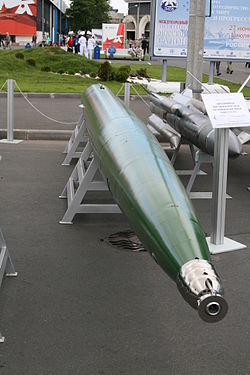
VA-111 Shkval
|
|
| Type | Supercavitating Torpedo |
| Place of origin | Russia |
| Service history | |
| In service | 1977-present |
| Used by | Russian Navy |
| Production history | |
| Designer | NII-24 research institute |
| Designed | 1960s-70s |
| Manufacturer | Tactical Missiles Corporation |
| Produced | 1977-present |
| Variants | Shkval 2 Shkval-E |
| Specifications | |
| Weight | 2,700 kg (6,000 lb) |
| Length | 8.2 m (26 ft 11 in) |
| Diameter | 533 mm (21 in) |
| Effective firing range | Shkval: 7 km (4.3 mi) Shkval 2: From 11–15 km (6.8–9.3 mi) |
| Warhead | Conventional explosive or nuclear |
| Warhead weight | 210 kg (460 lb) |
| Engine | Solid-fuel rocket |
| Propellant | Solid-fuel |
| Speed | Launch speed: 50 knots (93 km/h; 58 mph) Maximum speed: in excess of 200 knots (370 km/h; 230 mph) |
Guidance
system |
GOLIS autonomous inertial guidance |
Launch
platform |
533 mm torpedo tubes |
The VA-111 Shkval (from Russian: шквал — squall) torpedo and its descendants are supercavitating torpedoes developed by the Soviet Union. They are capable of speeds in excess of 200 knots (370 km/h).[1]
Contents
Design and capabilities
Design began in the 1960s when the NII-24 research institute was ordered to produce a new weapon capable of engaging nuclear submarines. The merger of the institute and GSKB-47 created the Research Institute of Applied Hydromechanics, who continued with the design and production of the Shkval.[2]Previously operational as early as 1977, the torpedo was announced as being deployed in the 1990s.[2] The Shkval is intended as a countermeasure against torpedoes launched by undetected enemy submarines.[2]
Shkval nose cone
Shkval rear, showing the guidance fins and the electronics connector
Early designs may have relied solely on an inertial guidance system.[4][5] The initial design was intended for nuclear warhead delivery. Later designs reportedly include terminal guidance and conventional warheads.[6]
The torpedo steers using four fins that skim the inner surface of the supercavitation gas bubble. To change direction, the fin(s) on the inside of the desired turn are extended, and the opposing fins are retracted.[2]
Manufacture
The torpedo is manufactured in Kyrgyzstan by a state-owned factory. In 2012 the Russian government asked for a 75% ownership of the factory in exchange for writing off massive Kyrgyz debt to Russia.[7]Espionage
In 2000, former U.S. Naval intelligence officer and an alleged DIA spy Edmond Pope (Captain, USN, retired) was held, tried, and convicted in Russia of espionage related to information he obtained about the Shkval weapon system. Russian President Vladimir Putin pardoned Pope in December 2000, allegedly on humanitarian grounds because he had bone cancer.[8][9]Specifications
There are at least three variants:- VA-111 Shkval – Original variant; GOLIS autonomous inertial guidance.
- "Shkval 2" - Current variant; believed to have additional guidance systems, possibly via the use of vectored thrust, and with much longer range.
- A less capable version currently being exported to various third world navies. The export version is referred to as "Shkval-E".
- Iran claimed it has created a version named Hoot.
- Length: 8.2 m (26 ft 11 in)
- Diameter: 533 mm (21 in)
- Weight: 2,700 kg (6,000 lb)
- Warhead weight: 210 kg (460 lb)
- Speed
- Launch speed: 50 knots (93 km/h; 58 mph)
- Maximum speed: 200 knots (370 km/h; 230 mph) or greater
- Range: Around 11–15 km (6.8–9.3 mi) (new version). Older versions only 7 km (4.3 mi)[10]







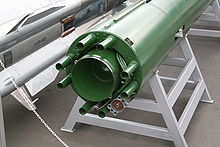
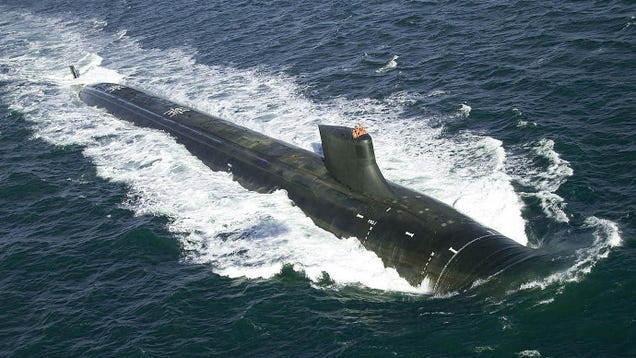
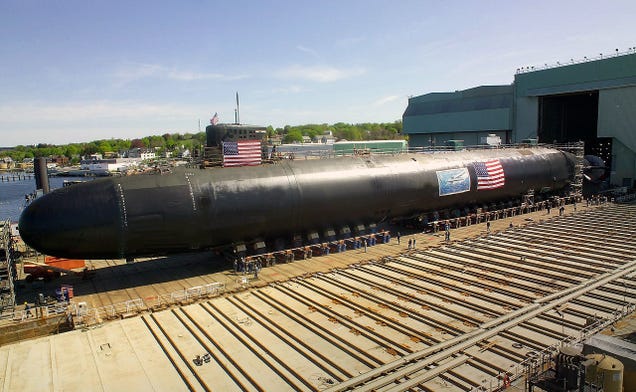
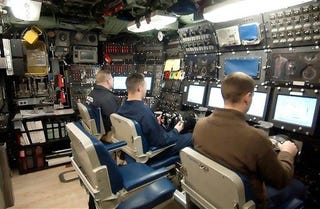
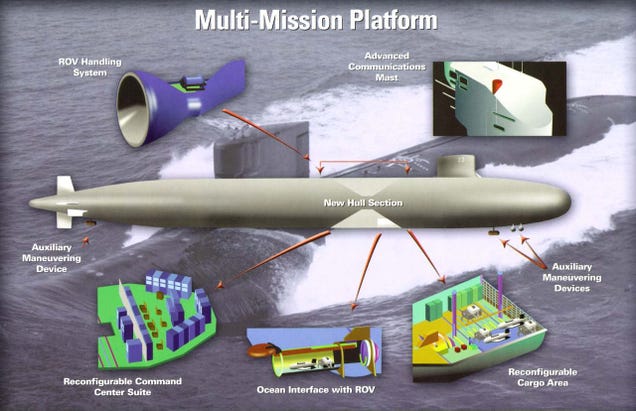
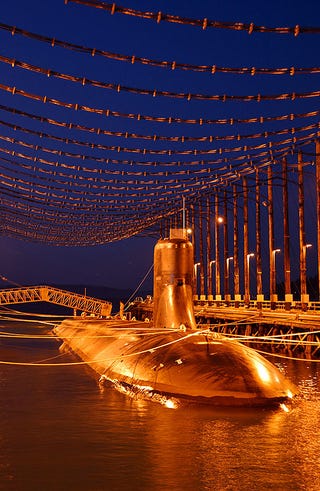
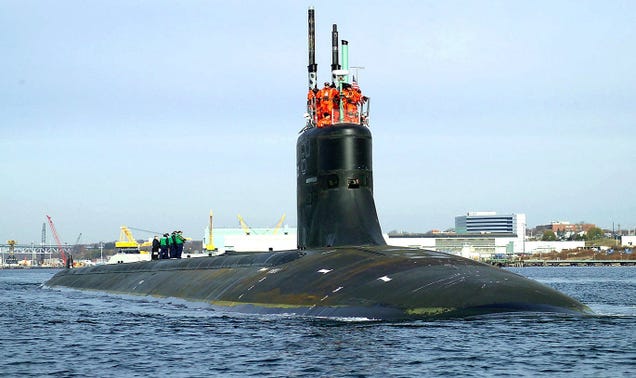
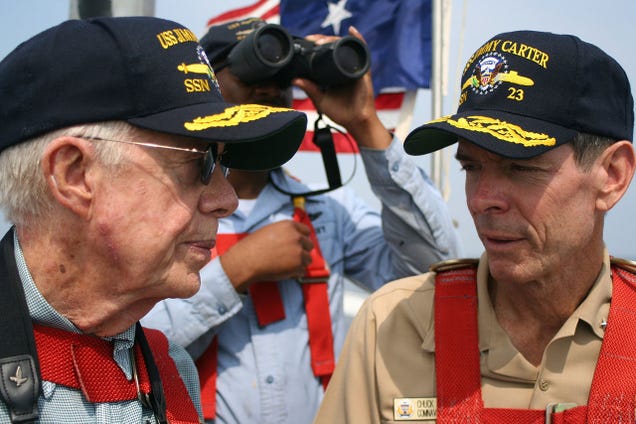
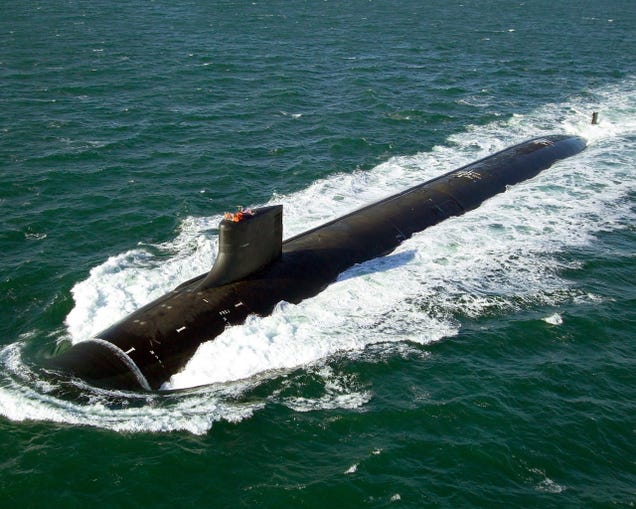
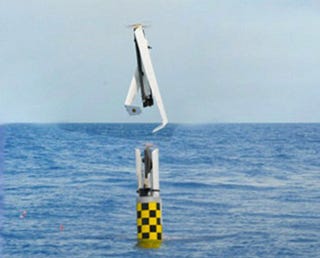
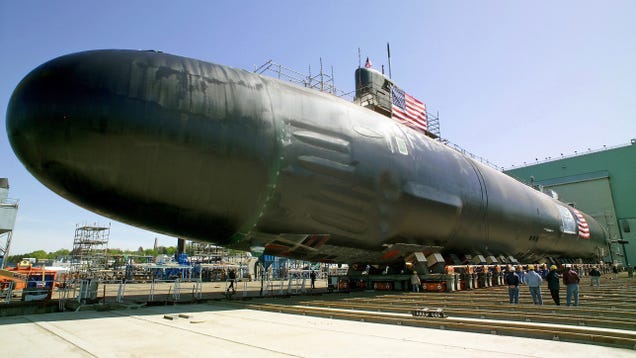
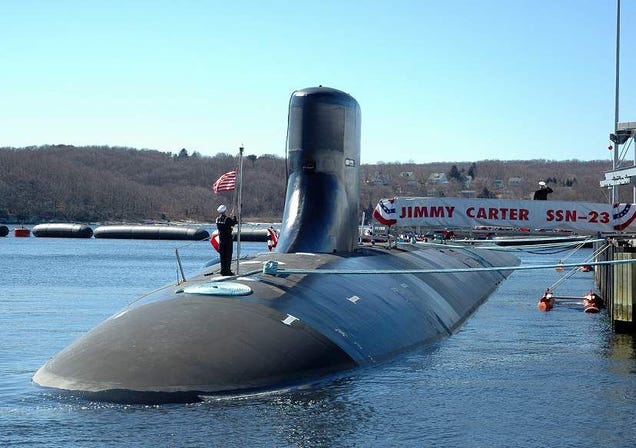



















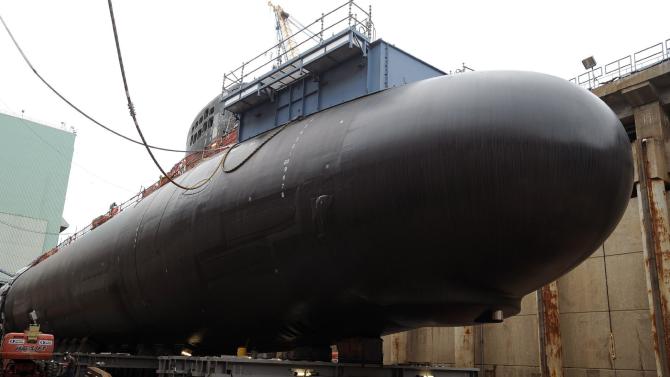


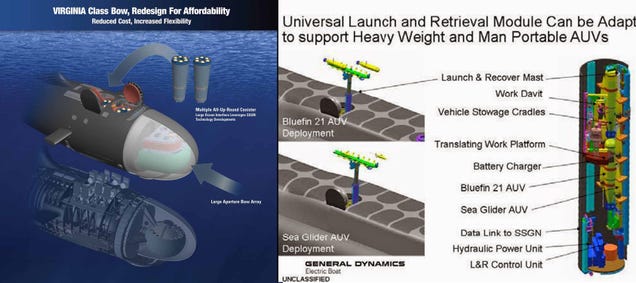


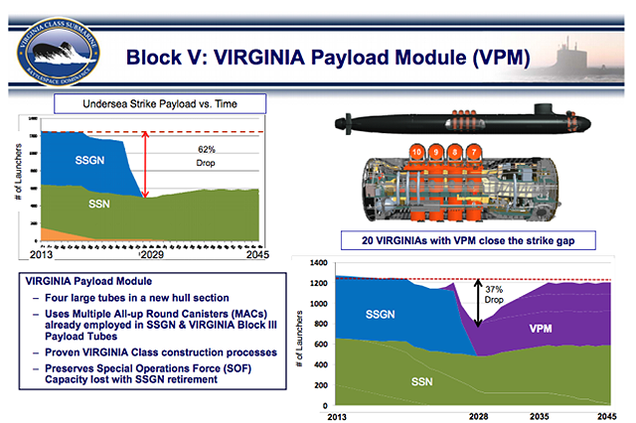








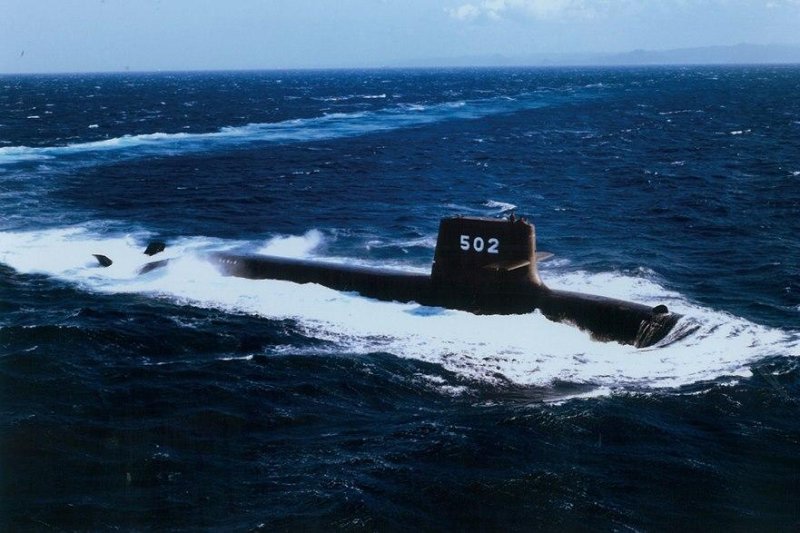




No comments:
Post a Comment